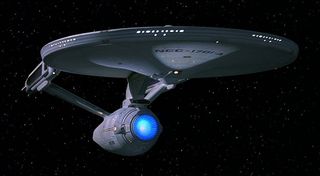'Star Trek' Called On to Study 24th Century Heart Health

How might heart problems be different in the future? To find out, Austrian researchers inspired by the television show Star Trek looked to see if the sci-fi series could provide a glimpse of what the treatment and outcomes of heart problems might look like in the 24th century.
The researchers boldly went and analyzed 526 episodes of "Star Trek: The Next Generation," "Star Trek: Deep Space Nine" and "Star Trek: Voyager," looking for portrayals of cardiac arrest, a condition in which the heart suddenly stops beating properly, preventing blood from circulating. (This is not the same as a heart attack, which occurs when blood flow to the heart is blocked.)
The researchers documented 96 cardiac arrests on the show, and around 90 percent were fatal.
The most common cause of a cardiac arrest on Star Trek was trauma, such as severe physical injury, and injury from "energy weapons." In contrast, most cardiac arrests today are caused by heart rhythm problems or a heart attack.
This result lead the researchers to the tongue-in-cheek conclusion that people in the 24th century will live much more healthily than people do today, because they may have fewer heart problems related to a bad diet. [Science Fact or Fiction? The Plausibility of 10 Sci-Fi Concepts]
"Cardiac arrest remains a critical event in the 24th century," the researchers wrote. However, "quick access to medical help and new prognostic tools," established by the 24th century will help treat people in cardiac arrest," they said.
For example, the researchers found that on Star Trek, a patient's survival did not depend on where that person had a cardiac arrest. This differs from today, when a patient who has a cardiac arrest in a hospital is more likely to survive than a patient who has a cardiac arrest on the street or at home.
Sign up for the Live Science daily newsletter now
Get the world’s most fascinating discoveries delivered straight to your inbox.
The researchers attributed this difference to Star Trek's technology of "teleportation," which allows patients to be transported from one location to another at lightning-fast speed. A medical scanner tool called a tricorder also helped to diagnose and treat patients.
The study, which was conducted by researchers at the Medical University of Vienna, is published in the December issue of the journal Resuscitation.
Follow Rachael Rettner @Rachael Rettner. Follow Live Science @livescience, Facebook & Google+. Original article on Live Science.

Rachael is a Live Science contributor, and was a former channel editor and senior writer for Live Science between 2010 and 2022. She has a master's degree in journalism from New York University's Science, Health and Environmental Reporting Program. She also holds a B.S. in molecular biology and an M.S. in biology from the University of California, San Diego. Her work has appeared in Scienceline, The Washington Post and Scientific American.
